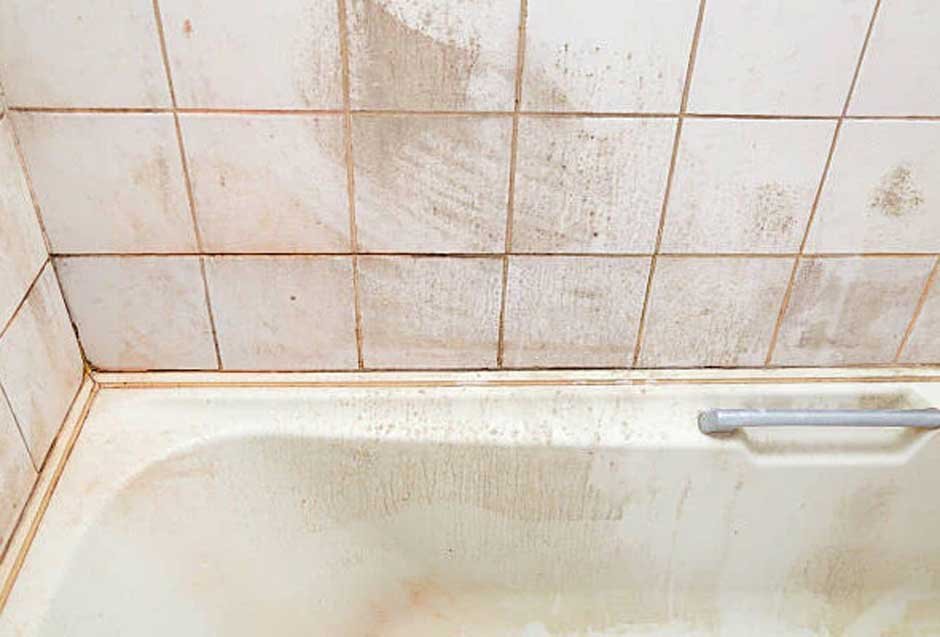Fighting pink mould in the shower can sometimes feel like a never-ending saga.
Just when you think you have won, with your bathroom shining from top to bottom, those slimy pink spots reappear. Your hard effort turns into an annoyingly familiar ritual.
While pink mould is less well-known than black mould, it can nonetheless create serious issues if left untreated. Health risks and unsightly tile discolouration make many homeowners want a permanent treatment.
The good news? You are not alone. We have got all the tips you need to win this battle. Keep reading to find out how!
What Is Pink Mould and Why Does It Appear?
Though its name is deceptive, this is not a kind of mould. Rather, it thrives in wet conditions, hence, your shower is the ideal breeding place.
Eating soap residue, shampoo, and the fatty deposits from skin and hair, this bacteria produces ugly pink or crimson stains. You will find similar conditions around sinks and toilets as well.
Though it is less harmful than black mould, this species can aggravate respiratory problems and harm those with compromised immune systems.
Your Action Plan for Removing Pink Mould
Eradicating pink mould takes more work than just wiping it off with a cloth. It needs ongoing care and rigorous scrubbing using strong cleaning agents.
Here is how you approach it:
- Compile your supplies: For those unreachable areas, you will need a decent scrub brush, a sponge, bleach or strong cleanser, rubber gloves, and an old toothbrush.
- Ensure proper ventilation: Before you begin polishing, make sure that your bathroom is properly aerated.
- Apply a cleaning solution: Use bleach or a commercial mould cleaner on the impacted areas. Give it ten to fifteen minutes to settle. This will assist in bacterial breakdown.
- Scrub away the mould: Get into the grout lines and corners as you use a stiff brush or a sponge over the mouldy sections. To reach tight areas around taps or between tiles, use an old toothbrush.
- Rinse and repeat: Rinse the area thoroughly with water after wiping. Check for any lingering mould—if you spot any, continue cleaning until it is completely removed.
- Add the final touches: After you have thoroughly cleaned the affected spaces, give the whole area a rinse and dry it down with a towel to eliminate any excess moisture.
If you are feeling victorious after your first successful cleaning, hold your horses! The battle against pink mould does not stop there.
Eliminating it can be quite a workout, and many people find themselves stuck in a cycle of trying to stop it from returning. That is why taking preventive measures is essential.
How to Prevent Pink Mould from Returning
After you have devoted your precious time and effort to maintaining the shower, the last concern you want is for the issue to resurface.
Thankfully, there are a few easy actions you can implement to keep this situation in check.
Keep Your Space Dry
These organisms love moisture, so reducing the water left on your walls and floors will help keep it at bay.
Use a towel or squeegee to dry down the tiles and shower curtain for a few minutes. This little effort pays off in keeping mould from settling in your bathroom.
Use Mould-Resistant Products
Many cleaning agents available today are meant to stop mould development. You can also use mould-resistant shower curtains and tiles, as these are particularly helpful in moist surroundings.
Including them in your bathroom will lower the likelihood of pink mould developing further.
Follow a Regular Cleaning Routine
Although it is tempting to skip weekly scrubbing, the best approach to prevent mould is consistent maintenance.
Once a week, a simple wash-down of the basin and the tub with a light cleaning agent helps stop mould from resurfacing. Consistency is key.
Let the Experts Handle It
If you are short on time or simply tired of the endless scrubbing, hiring a cleaner can be a game-changer.
Professionals use powerful disinfectants to remove stubborn dirt. These specialised treatments are far more effective at tackling lingering mould than standard household cleaning products.
Armed with expert knowledge and techniques, they can address moisture issues at the root, eliminating harmful bacteria and reducing regrowth.
The result? A fresher, healthier bathroom without the hassle. You will spend less time scrubbing and more time enjoying a spotless space.
Understanding the Health Risks
Although pink mould might not be as harmful as black mould, it still poses some health hazards, particularly with long-term contact.
The bacteria responsible for these slimy patches, Serratia marcescens, can spread through airborne particles and contaminated surfaces. Frequent contact with these surfaces increases the risk of exposure.
For most people, the effects are mild and not a major concern. However, those with respiratory conditions, allergies, or weakened immune systems may experience worsened symptoms, such as coughing, congestion, or skin irritation.
In some cases, Serratia marcescens has been linked to infections in wounds, the urinary tract, and even the digestive system when proper hygiene is not maintained.
The Role of Water Quality in Mould Prevention
While moisture control and regular upkeep are key to keeping pink mould at bay, the quality of your water also plays a crucial role.
Rich in minerals like calcium and magnesium, hard water often leaves behind tenacious layers that provide an ideal habitat for bacteria.
These mineral accumulations not only make cleaning more difficult but also trap moisture, which helps mould return easily.
To address this, you might choose to install a water softener or break down limescale in your shower using descaling treatments.
Another easy approach to keep your bathroom smelling fresh and free of buildup is to wipe off surfaces after each usage.
If hard water deposits remain a persistent problem, engaging specialised services could be a worthwhile investment.
Trained individuals have access to powerful descaling solutions and specialist techniques that remove even the toughest coating more effectively than off-the-shelf products.
A deep clean not only helps maintain water-exposed surfaces but also reduces the conditions that encourage pink mould.
Conclusion
Though it can be annoying, pink mould is not a difficult issue to address. Your bathroom will not be overrun by it if you use the correct cleaning methods and a few preventative actions.
Long-term success depends on consistency whether you decide to do the work yourself or call a cleaning expert. So, dry those walls, let some fresh air in, and savour your brand-new, spotless, mould-free shower.
















